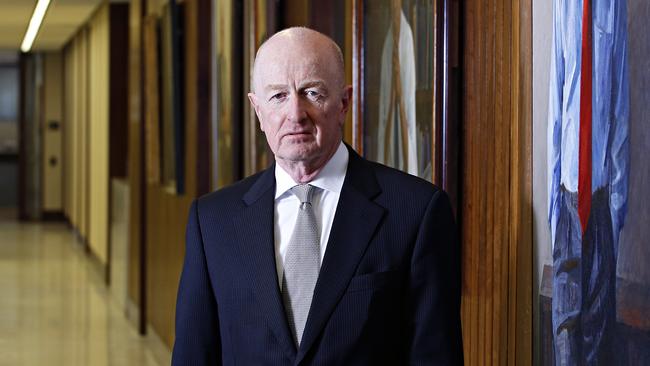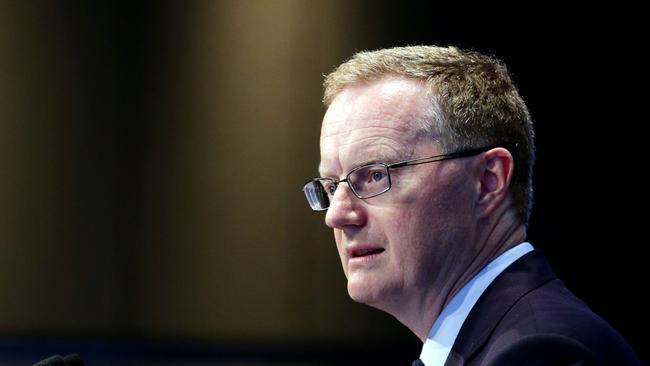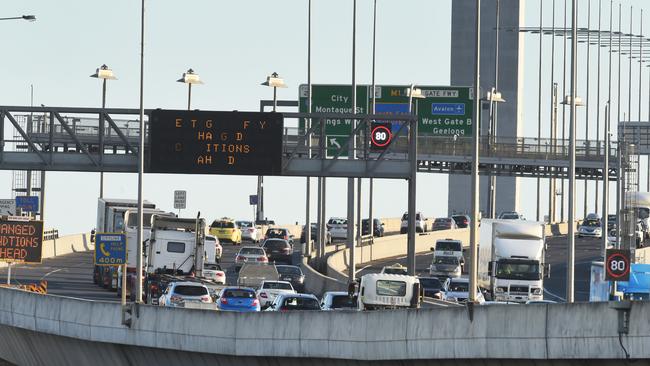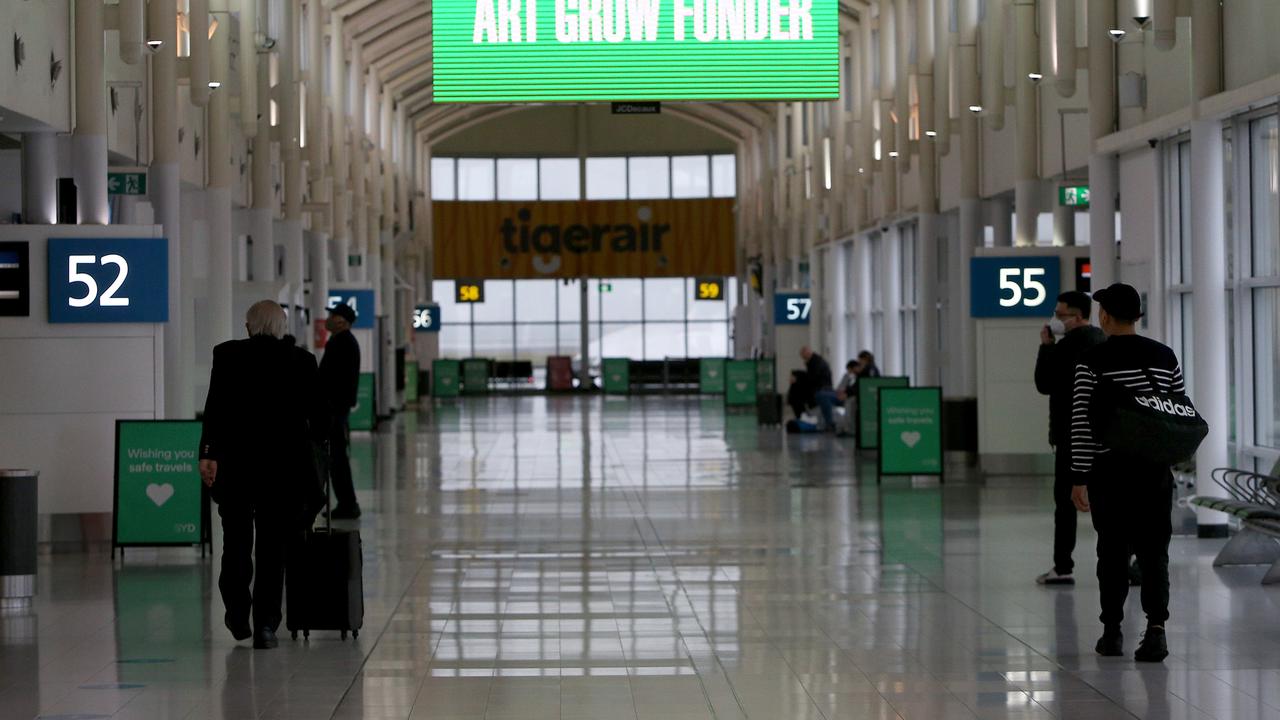Terry McCrann: Janet and Philip’s interest rate tango
THE Goldilocks inflation numbers of two weeks ago have led on to a projection of a Goldilocks economy more broadly over the year ahead from RBA governor Philip Lowe, writes Terry McCrann.

Terry McCrann
Don't miss out on the headlines from Terry McCrann. Followed categories will be added to My News.
THE Goldilocks inflation numbers of two weeks ago have led on to a projection of a Goldilocks economy more broadly over the year ahead from Reserve Bank governor Philip Lowe.
The RBA is projecting that headline inflation will pick up over the course of 2017 to get above 2 per cent by year’s end. As the RBA is supposed to aim for inflation of 2-3 per cent, that’s high enough, but not too high. Just right.
The RBA is projecting growth in the economy to run around 3 per cent over both 2017 and 2018.
Unlike with inflation, it doesn’t have a specific growth target, but that’s also more or less “just right”. Any less would be too low; higher would be nice but not realistic.
I would add that those numbers, if realised, would not only be “just right” for the RBA and its obligations, but would more importantly be “just right” for you — in terms of the balance between price increases which take money out of your pocket and growth, jobs and wage rises, which put it in.
On the basis of those projections, there was no point in cutting the official interest rate any lower and as almost universally accepted, the RBA didn’t. And absent some shock, it won’t cut at the next two meetings in March and April either.
Lowe & Co will want to see the March quarter inflation figures at the end of April ahead of the May meeting. Last year, as I discussed two weeks ago, shockingly low March quarter inflation figures “forced” Lowe’s predecessor, Glenn Stevens, to cut at that May meeting.

We are running a parallel course this year but with some huge differences. The biggest are the arrival of Donald Trump in the White House and that Fed head Janet Yellen is one year further down the road she and her colleagues have been treading towards higher interest rates.
First with Yellen, even if Trump hadn’t won she would have been closer to having delivered more US official interest rate rises by this May compared with what she had actually delivered by last May — just one since 2008.
All through 2016, Stevens had been hanging on a US rate rise or rises, plural, preferably, to take pressure off the Aussie dollar. He went to retirement in September unfulfilled. Lowe’s been on the same “wait list” since. His wish is much more likely to be granted.
First, just because of that passage of time. But indeed more, because of Trump’s arrival in the White House and the (business and consumer) animal spirits that’s unleashed in the US — with even further economy-boosting actual decisions about to follow.
All that paints in more and likely quicker rate rises from Yellen — although from her latest remarks she doesn’t seem to have realised that yet.
When she does deliver further rate rises, broadly, that would mean that instead of money flowing east to west across the Pacific to grab our attractive 1.5 per cent plus, it would start flowing the other way to grab the higher US rates.
All up, that’s ultimately why a “just right” Goldilocks economy is exactly what we need right now. To enable the RBA to sit on a “just right” 1.5 per cent; but also, so that it might get to the point where it had flexibility to eventually move either up or down as circumstances demanded.
You really don’t want to see the RBA’s official rate go even lower. That would signal something bad in the global economy or the local one or even both.

Equally, you don’t want to see the RBA raise its rate anytime soon, and it won’t: there’s absolutely no prospect of that.
I say that, not because a higher rate is bad. To the contrary, the 1.5 per cent is artificially and undesirably low.
IT really would be better all around if it were at least 3 per cent — for savers, for cooling the property market, to name just two pluses.
But not right now, given the state of the domestic economy and both the state of play in the major world economies and the very low level of global rates.
We have to wait for Yellen to raise US rates and wait even more in a sense, for the underlying US reality that such rate rises would reflect.
So the big watch, for Lowe & Co, but also for you as a citizen and as an investor, and as perhaps a saver or borrower or both, is northeast across the Pacific.
You also need to be “watching” due north. The US is key to global rates; but China remains the single most important driver of our economy.
Except for those times when the China dynamic is utterly unambiguous, especially in booms, what exactly is going on tends to be a puzzle wrapped in a riddle (and very dodgy statistics).
That said, right now and as best one can judge, it’s also looking somewhat Goldilocks — with growth ticking over and so solid-to-strong demand for our commodities and no big shocks on the renminbi or financial flows fronts.
In sum we are in a pretty good middle-of-the road place. It probably won’t last — it never does; but that said the “Goldilocks World” is looking pretty robust right now.

TRANSURBAN COLONISES YOUR WALLET
TRANSURBAN first colonised the wallets of Melbourne drivers, then moved on to Sydney and is now in the early but still spectacularly lush stages of doing the same in Brisbane.
As I’ve noted before, once Transurban establishes itself as the major — preferably, only — toll-road operator in a city, it becomes not just the “go-to guy” for any new toll roads (and even more, with extensions), it becomes almost impossible to go to anyone else.
The model is simple but sweet. Once you establish the monopoly in our high-population growth major cities, it works like this.
An all but guaranteed low-single digit volume growth cascades to high-single digit revenue growth, thanks to annual toll escalations; which then cascades to double-digit profit growth thanks to low and relatively static operating costs.
So, its Sydney roads — now its biggest market — recorded 3.4 per cent traffic growth becoming 8.8 per cent revenue growth, becoming 10.4 per cent profit growth.
Brisbane, with decades of growth ahead, was much smaller in dollar terms but much more spectacular. A 19.4 per cent traffic growth became 31.6 per cent revenue growth, became 39.6 per cent profit growth.
Melbourne appeared mature. Traffic growth was actually negative at 0.7 per cent, but that still became positive 2.7 per cent revenue growth, but then only 2.5 per cent profit growth.
Those raw numbers are misleading because of the massive works underway. Think of this as the “pause that refreshes” — when they are done, the numbers will go back to leaping and cascading.
And there’s a semi-hidden kicker in all this. In both Melbourne and Sydney, Transurban has only just completed the increase in heavy vehicle tolls to three — yes, three — times that of cars.
That will give a huge one-off boost to the Melbourne-Sydney cascade between volume and revenue (and then on to profit). It will also build in higher dollar growth figures going forward.
Transurban would sell this as a win-win gouge.
Originally published as Terry McCrann: Janet and Philip’s interest rate tango


